Monday, December 20, 2010
Specialised Application Software
Bitmap image
HTML editor
Multimedia
Vector Image
Web Authoring
Basic Application Software
Word Processor
Spreadsheet
Database Management System (DBMS)
Utility Suites
Thursday, March 4, 2010
 device that is connected to a network. Devices like computers and printers.
device that is connected to a network. Devices like computers and printers. 

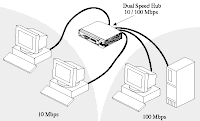 the center or central node for other nodes. This device can be a server or simply a connection point for from other nodes.
the center or central node for other nodes. This device can be a server or simply a connection point for from other nodes. a large centralized computer, usually a minicomputer or a mainframe.
a large centralized computer, usually a minicomputer or a mainframe.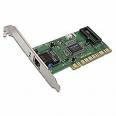 expansion cards located at the system unit that connects computer to a network. Can be referred to as a LAN adapter.
expansion cards located at the system unit that connects computer to a network. Can be referred to as a LAN adapter. a computer specialist responsible for efficient network operations and implemention of new networks and such.
a computer specialist responsible for efficient network operations and implemention of new networks and such.
Monday, February 8, 2010
 Sockets is a method for communication between a client program and a server program in a network. A socket is defined as "the endpoint in a connection." Sockets are created and used with a set of programming requests or "function calls" sometimes called the sockets application programming interface (API). The most common sockets API is the Berkeley Unix C interface for sockets. Sockets can also be used for communication between processes within the same computer.
Sockets is a method for communication between a client program and a server program in a network. A socket is defined as "the endpoint in a connection." Sockets are created and used with a set of programming requests or "function calls" sometimes called the sockets application programming interface (API). The most common sockets API is the Berkeley Unix C interface for sockets. Sockets can also be used for communication between processes within the same computer. 
 An opening in a computer where you can insert a printed circuit board. Slots are often called expansion slots because they allow you to expand the capabilities of a computer. The boards you insert in expansion slots are called expansion boards or add-on boards.
An opening in a computer where you can insert a printed circuit board. Slots are often called expansion slots because they allow you to expand the capabilities of a computer. The boards you insert in expansion slots are called expansion boards or add-on boards.



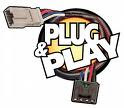
 Used to connect mouse, keyboards, modem and many others to the system unit. It transfers data in sequence and it is good for long distance usage.
Used to connect mouse, keyboards, modem and many others to the system unit. It transfers data in sequence and it is good for long distance usage.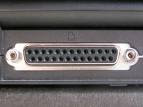


Monday, January 25, 2010
The Internet, The Web, and E-commerce

B2C. A transaction that occurs between a company and a consumer, as opposed to a transaction between companies (called B2B). The term may also describe a company that provides goods or services for consumers.
- consumer to consumer (c2c)

Consumer-to-consumer (C2C) electronic commerce involves the electronically-facilitated transactions between consumers through some third party. A common example is the online auction, in which a consumer posts an item for sale and other consumers bid to purchase it; the third party generally charges a flat fee or commission. The sites are only intermediaries, just there to match consumers.
- E commerce

Econsumer.gov is an online complaints service for consumers across the globe to register complaints against foreign traders regarding online scams and cross border fraud.
-Intenet security suite
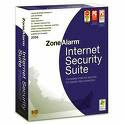
includes protection of information and property from theft, corruption, or natural disaster, while allowing the information and property to remain accessible and productive to its intended users. The terms computer system security, means the collective processes and mechanisms by which sensitive and valuable information and services are protected from publication, tampering or collapse by unauthorized activities or untrustworthy individuals and unplanned events respectively.
- Javascript

JavaScript is an object-oriented scripting language used to enable programmatic access to objects within both the client application and other applications It is primarily used in the form of client-side JavaScript, implemented as an integrated component of the web browser, allowing the development of enhanced user interfaces and dynamic websites.
-Plug in

-Spam
 Spam is the abuse of electronic messaging to send unsolicited bulk messages indiscriminately. Spamming remains economically viable as operators have got no operating costs beyond their management. Spamming is universally reviled, and has been the subject of legislations in many jurisdictions.
Spam is the abuse of electronic messaging to send unsolicited bulk messages indiscriminately. Spamming remains economically viable as operators have got no operating costs beyond their management. Spamming is universally reviled, and has been the subject of legislations in many jurisdictions.Wiki
Applets
HTML
URL
Monday, January 18, 2010
Careers in IT

Computer Support Specialist
Computer Support Specialists help people fix their computers when something goes wrong. They help in the form of phone calls and email. They can also help face to face, depending on the situation. They help users install softwares and teaches users how to use them. On rare occasions, they write instruction books to guide users.
 Technical Writer
Technical Writer
A technical writer designs, writes, creates, maintains, and does regular updates on technical documentation which includes online help, user guides, system manuals, and other documents. In addition to that, professional technical writer does proofreading, editing, and formatting for other professionals as well.

Software engineer
A software engineer does countless researches, produces never before seen designs and develops software systems to meet with clients requirements of any sort. Once the system is ready, the software engineers then test, debug, and maintain the systems. The also specialise in creating technical specifications and test plans, working with computer coding languages, writing operational documentation with technical authors and countless others.
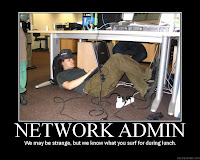 Network Administrator
Network AdministratorThe network administrator is the highest level of technical or network staff in an organization and will rarely be involved with direct user support. A Network Administrator concentrates on the overall health of the network, server deployment, security, and ensuring that the network connectivity throughout a company's LAN/WAN infrastructure is on par with technical considerations at the network level of an organization's hierarchy.
 Database Administrator
Database Administrator
A database administrator is someone who is responsible for the well being of a database. The database is secured by ensuring the data remains consistant and clearly defined. Additional roles played by a database administrator includes planning, development and troubleshooting.


